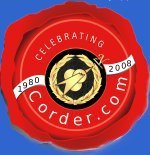
Corder Enterprises International
|
|
| The Green Datacenter |
E-Mail This Page
To a Friend.



VCP & VCIs
- state how the shell functions as a user interface and command line interpreter;
- modify built-in shell variables and create and use user-defined shell variables;
- use I/O redirection, pipes, quoting, and filename expansion mechanisms;
- create structured shell programs which accept and use positional parameters and exported variables;
- use the shell flow control and conditional branching constructs (while, for, case, if, etc.);
- create shell programs which process interrupts, pass signals, invoke subshells and functions, and trap signals;
- use shell debugging mechanisms to improve shell program efficiency and detect and correct errors.
- UNIX Bourne Shell Programming Student Guide and course notes.
- CU001 - Fundamentals of UNIX or equivalent experience using UNIX.
- OVERVIEW OF THE SHELL
- Command interpretation.
- Processes
- Process Creation
- fork and exec.
- Process invocation
- User Environment
- Login Shell Variables
- Setting Variables from the Login Prompt
- The /etc/profile and .profile files.
- Setting and Printing Variables
- I/O Redirection
- Pipelines
- File Name Generation
- Quoting
- Command Substitution
- Background Processing
- CREATING AND EXECUTING SHELL PROGRAMS
- Creating a Shell Program
- Executing a Shell Program
- Debugging Shell Programs
- SHELL VARIABLES & PARAMETERS
- Assigning Variables
- Printing Variables
- The read command.
- Variable Types
- Exporting Variables
- Shell Parameters
- Conditional Parameter Substitution
- Positional Parameters
- shift Command
- The set and unset commands
- The . (dot) Command
- CONDITIONAL TESTING
- The test Command
- The if, else, and elif statements.
- The case statement.
- The exit command
- LOOPING MECHANISMS
- The for, while, and until loops.
- The true and false statements
- The break and continue statements
- SIGNALS AND TRAPS
- Signals
- Traps
- SUBSHELLS AND FUNCTIONS
- Subshells
- Functions
- PROGRAMMING CONSIDERATIONS
- Resource Consumption
- Processes and Files
- Programming Hints
- CASE STUDY
- COURSE CONCLUSION
CU0012 UNIX Bourne Shell Programming
Length: 4 Days
See Also "UNIX for Programmers"
Description
This course teaches attendees how to use the Bourne shell to design and develop command language programs. Topics include an overview of the shell and it's functions, command line processing, control constructs (for, while, case, etc.), conditional branching, quoting, positional parameters, command substitution, pipelines, use of built-in shell commands, functions, sub-shells, signals, traps, shell programming efficiencies, and debugging. This course is applicable to all releases of UNIX which have the Bourne shell.Course Objectives
Upon completion of this course the attendee will be able to:Course Materials
Prerequisites
Course Content
|
Course Flyer |
| |

